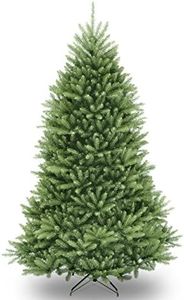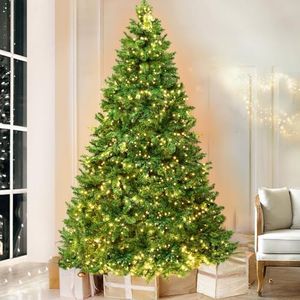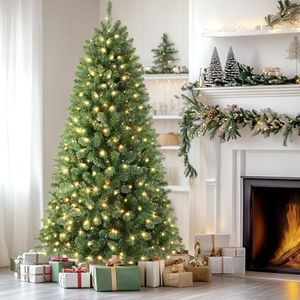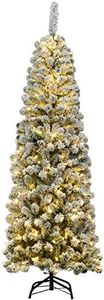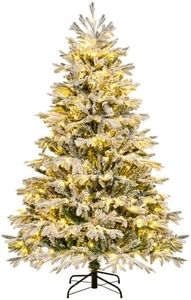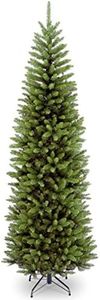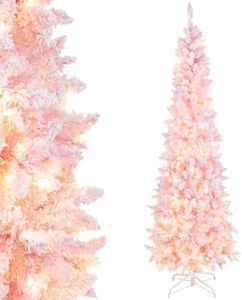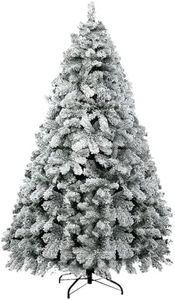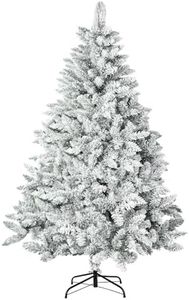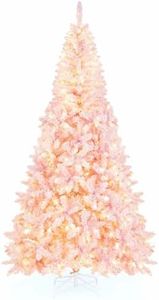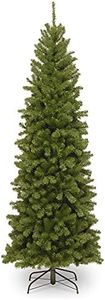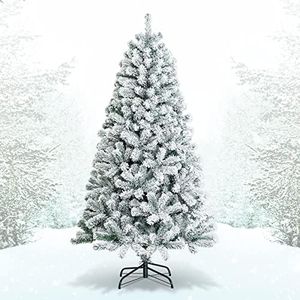We Use CookiesWe use cookies to enhance the security, performance,
functionality and for analytical and promotional activities. By continuing to browse this site you
are agreeing to our privacy policy
10 Best Christmas Trees
From leading brands and best sellers available on the web.By clicking on a link to a third party's website, log data is shared with that third party.
Buying Guide for the Best Christmas Trees
Choosing a Christmas tree can be a joyful but sometimes confusing process because there are many types, sizes, and features to consider. The right tree for you will depend on the space you have at home, how much effort you want to put into decorating, and whether you prefer a real or artificial tree. Knowing the key factors to look out for can help you make an informed choice that will bring holiday cheer to your space.Type (Real vs Artificial)This refers to whether the tree is a natural cut tree or a manufactured, reusable one. Real trees offer a classic look and smell, but require more maintenance like watering and eventually disposing of the tree. Artificial trees can be reused for many years, are easy to store, and create less mess. If you enjoy tradition and the natural scent, real trees may be best. If you want convenience and less yearly hassle, artificial trees could be a better fit.
HeightHeight is simply how tall the tree is, usually measured in feet or centimeters. This is important to consider based on your ceiling height and space available. Small trees (under 5 feet) are great for apartments, tabletops, or secondary rooms. Medium trees (5-7 feet) fit most standard living rooms. Large trees (over 7 feet) make a grand statement and work well in rooms with high ceilings. Consider measuring the space where your tree will go, leaving room for a tree topper if you plan to use one.
Width (Profile or Shape)Profile describes how full or narrow the tree appears, from wide and bushy to slim and pencil-like. A wide, full-profile tree looks more traditional and takes up more space, perfect for larger living areas. Slim or pencil trees work well in tighter spaces or corners. When selecting, think about the amount of floor space you have available and your decorating preferences.
Needle Type/MaterialThis spec refers to the kind of needles (for real trees: species like fir, pine, or spruce; for artificial: PVC, PE or mixed materials). Real trees differ in needle softness, durability, and how quickly they shed. Artificial needle materials impact how realistic the tree looks and how long it lasts. If you prefer softer needles and less shedding, certain real tree types or higher-quality artificial materials are desirable. Choose based on your preferred look and how much maintenance you're willing to do.
Pre-lit vs UnlitThis option is mostly for artificial trees—some come with built-in lights, while others do not. Pre-lit trees are convenient because lights are already installed evenly, but you're limited to the provided color and style. Unlit ones let you choose exactly how you want to decorate but require the extra work of stringing lights yourself. Consider if you want convenience and quick setup, or full control over the lighting appearance.
Assembly and StorageFor artificial trees, this refers to how easy it is to put the tree together, take it apart, and store it away for the next year. Some trees have hinged branches that fold down for easier assembly, while others require branches to be inserted individually. Storage can also depend on the tree's design and whether it comes with a bag or box. If you value quick setup and efficient storage, look for features that make the process easier.
